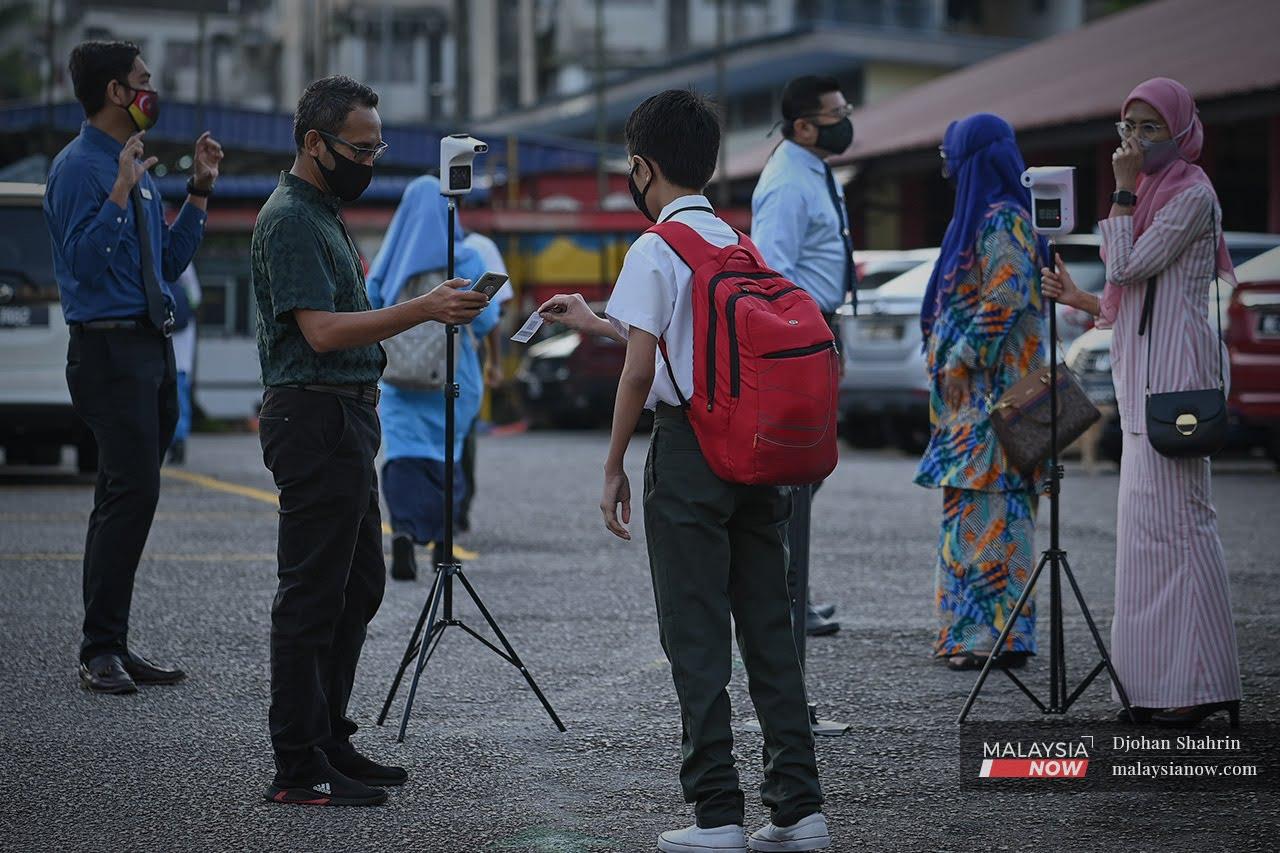Back to school but not necessarily the canteen
Budgeting is a headache for canteen operators who are also struggling to get by as many parents prefer their children to eat food packed from home.
While schools in Selangor have welcomed back students and teachers after the prolonged break caused by the Covid-19 crisis, canteen operators are still struggling to adjust to the often unpredictable situation, treading a fine line between the need to keep their business alive and the desire to waste as little as possible.
Muhammad Irhamshah, 26, runs the canteen at SMK Puchong. His biggest challenge at the moment is budgeting the amount of food to prepare for students each day.
“I am just a small canteen operator,” he told MalaysiaNow. “I don’t have a big margin to begin with, so I need to know how much food to prepare.”
Sometimes, he and his team prepare food for 100 students but only 20 turn up at the canteen.
“For the past few days, we have had to throw away a lot of excess food because we expected a lot of orders from students so we prepared more, but in the end only a few came to buy from us,” he said.
“We can’t tell who’s coming and who isn’t, so it’s hard for us to estimate the quantity of food that we should prepare.”
Wan Nor Asmah, who operates the canteen at SMK TTDI Jaya, said not many students are currently attending school as the vaccination programme for teenagers is still ongoing.
“Many students recently got their jabs,” the 57-year-old said. “Some came to school after that, but some took a long break after their vaccination.
“We can’t tell who’s coming and who isn’t, so it’s hard for us to estimate the quantity of food that we should prepare.
“Last Friday, only 50 students came to school for the afternoon session, and just six came to the canteen to buy food during recess time.”
By her estimation, some 300 Form Five students came to school last week along with half of those from Four Four and Form Three who are using the rotation system.
But not everyone who came bought food from the canteen.
“Some parents don’t let their children buy food from the canteen because they are still scared of Covid-19,” she said.
Wan Nelisa, who has a daughter in Form One, is one of them. She told MalaysiaNow that she always prepares food for her daughter to take to school.
“I prefer to cook for her because I want to minimise her movements to crowded places,” Wan Nelisa said.
“I feel more confident and secure if my daughter just stays in class and eats a home-cooked meal.”
Amni Marissa, a Form Three student at SMK Bukit Jelutong, also brings her own food to school as her mother wants her to avoid too much contact with other students.
“Even though there are SOPs, it’s hard to control a crowd of students during recess time,” she said.
Different systems
Checks by MalaysiaNow of various schools around Selangor found that different schools use different systems for handling canteen food.
“It’s hard to find workers who would like to do this job.”
SMK Puchong, for example, runs its canteen on an order system. This used to be online, with parents and students making their orders for the next day through WhatsApp. However, it was later changed to an offline system where students fill in a form which is sent to the canteen operator early in the morning.
At recess time, a class representative collects the food from the canteen and distributes it to the class.
At SMK TTDI Jaya, meanwhile, the canteen operator estimates the amount of food needed based on students’ daily attendance which is compiled by the teachers at the end of the first period.
Students are allowed to buy food at the canteen following the SOPs before returning to class to eat.
Asmah said this system works better for her than the ordering system as students like to see the food before choosing what to buy. But she still needs to improve in budgeting the amount of food to prepare each day.
Right now, she prepares enough food for only half the number of students in order to avoid wastage.
The headache continues for canteen operators outside the school compound as the price of food items has gone up and workers need to be paid.
Selling food at the canteen during the pandemic does not give Asmah a large profit margin. In fact, she has to pay her workers from her own pocket. There is also the problem of finding good workers to begin with.
“Before this, a lot of school canteen operators hired Indonesian workers but since the pandemic, many Indonesian workers have gone back to their home country.
“It’s hard to find workers who would like to do this job,” she said.
Subscribe to our newsletter
To be updated with all the latest news and analyses daily.
